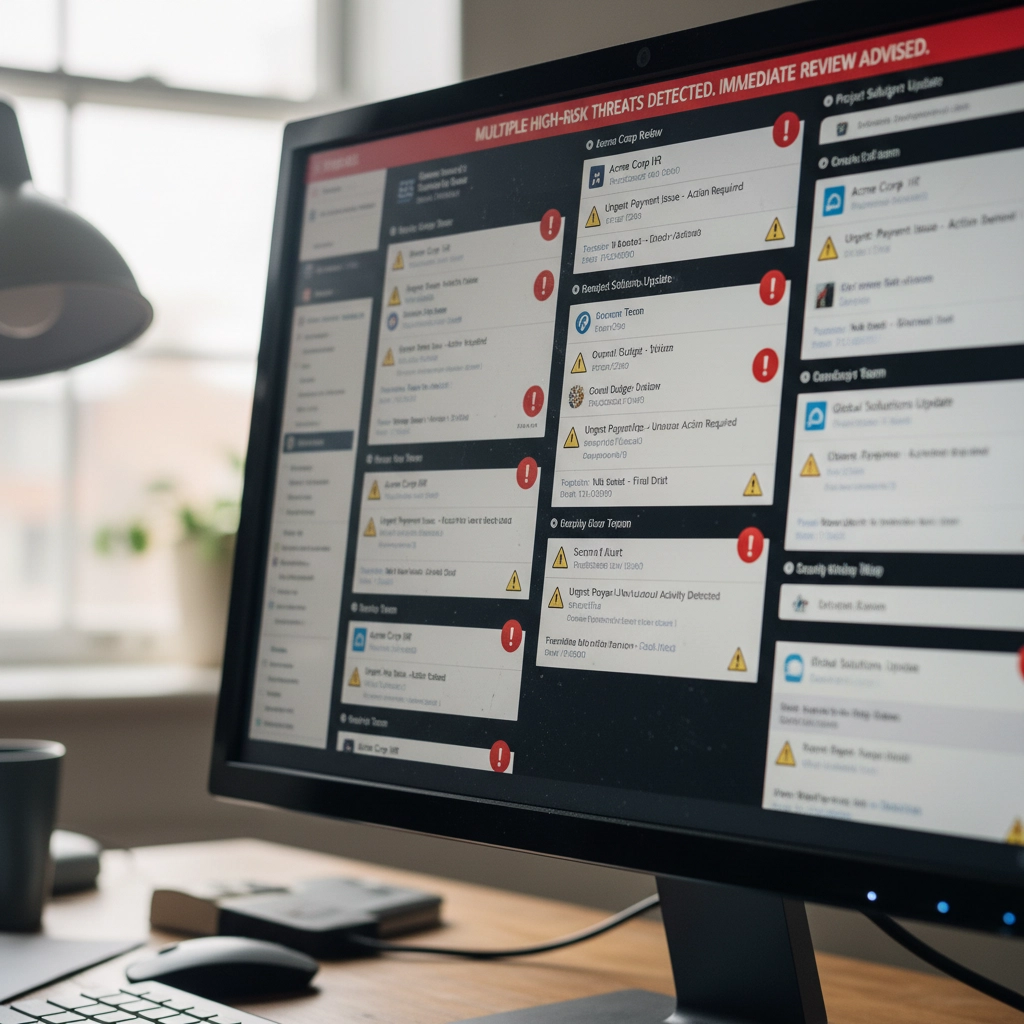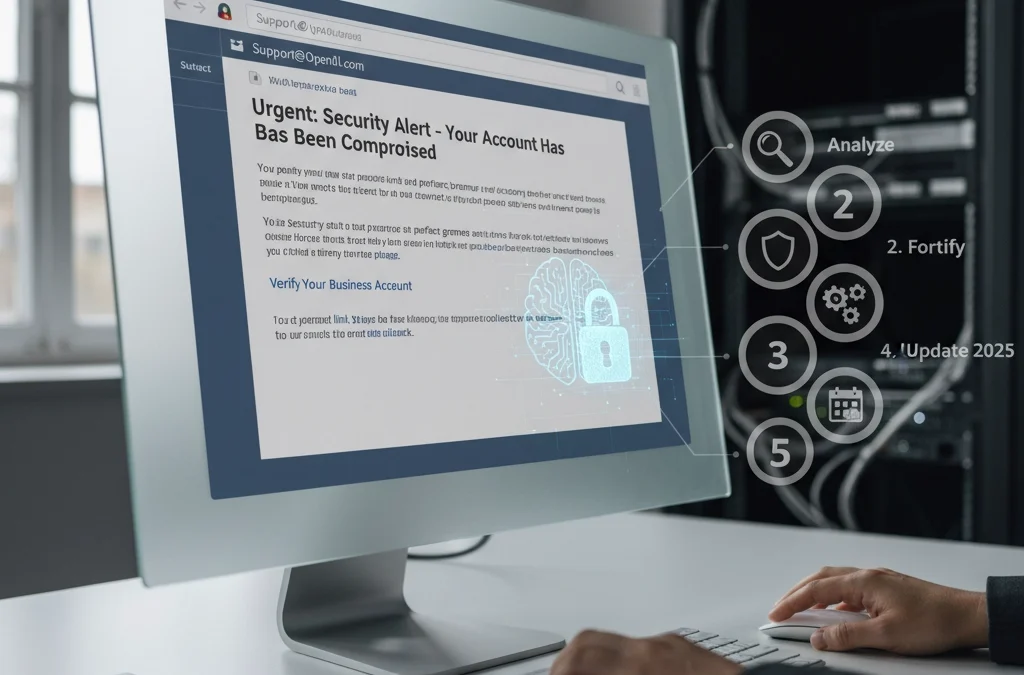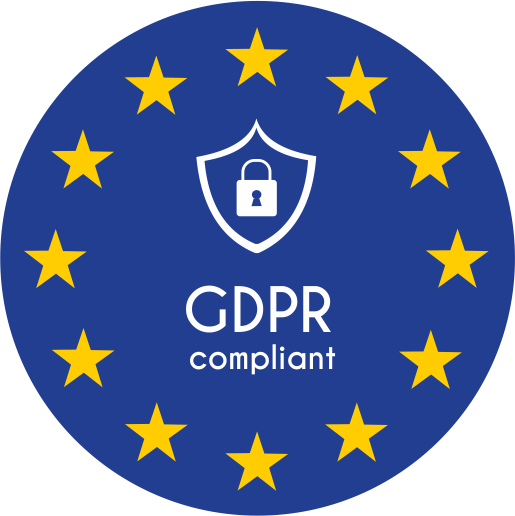Your business inbox just became a battleground. AI-generated phishing has surged past ransomware as the number one email threat in 2025. We're seeing a staggering 1,265% increase in phishing attacks powered by artificial intelligence since late 2024.
Gone are the days of obviously fake "Nigerian prince" emails riddled with spelling errors. Today's attackers harvest your LinkedIn profile, study your GitHub commits, and analyze your communication patterns. They're crafting emails so personalized and grammatically perfect that even tech-savvy professionals are falling for them.
Think about what's connected to your email accounts: banking, vendor relationships, customer data, employee records. One successful phishing attack can devastate your business. But don't panic. Here's exactly how to armor your inbox against these evolving threats.
The New Reality of AI Phishing
Modern phishing attacks aren't random spray-and-pray campaigns. Attackers use generative AI to create messages tailored specifically to you, your role, and your current projects. They might reference that new client you mentioned on social media or mimic your boss's exact writing style.
These attacks cost as little as $50 to deploy but can result in devastating financial losses and data breaches. The traditional email filters you've relied on? They're struggling to keep up with content that looks and sounds completely legitimate.

Step 1: Deploy AI-Powered Email Filtering Systems
Your current email security isn't enough. Period. You need modern systems that use machine learning to spot AI-generated content patterns that human reviewers would miss.
These advanced filters analyze subtle characteristics that distinguish artificial text from human writing. They catch syntax anomalies, stylistic inconsistencies, and language patterns that traditional signature-based detection completely overlooks.
Legacy email filters operate like security guards checking IDs at the door. AI-powered systems work more like behavioral analysts, studying how people actually communicate and flagging anything that doesn't match established patterns.
Don't wait for your current provider to "upgrade" their system. The gap between old and new technology is too significant. Investigate dedicated AI email security solutions designed specifically for these threats.
Step 2: Implement Behavioral Analysis and Anomaly Detection
Here's what makes AI phishing so dangerous: attackers can perfectly copy writing style but struggle to replicate authentic behavioral patterns. That's your advantage.
Deploy monitoring that continuously learns how your colleagues, vendors, and partners actually communicate. When someone claiming to be your accounting manager suddenly uses different sentence structures or timing patterns, the system flags it immediately.
Consider this scenario: your "CFO" emails requesting an urgent wire transfer. Traditional filters see legitimate credentials and approved content. Behavioral analysis notices this person never sends financial requests via email and always calls first.
These systems excel at catching spear-phishing attacks targeting specific individuals. Even perfectly crafted AI emails fail when they don't match the unique communication fingerprints of real relationships.

Step 3: Integrate Context-Based Defense Systems
Content analysis alone isn't sufficient anymore. You need security that understands context: the relationship between sender and recipient, timing expectations, and communication norms.
Context-based defenses combine AI and machine learning to verify whether messages align with established patterns. They question unusual requests from familiar vendors, unexpected urgent directives from executives, and communication that breaks established protocols.
For example, if your regular vendor suddenly emails requesting updated payment information, context-based systems flag this as suspicious. They know this vendor typically handles payment changes through phone calls and account managers.
This approach adds verification layers that generic content analysis cannot provide. It's particularly effective against sophisticated attacks that use accurate information but inappropriate communication channels.
Think of it as having a security assistant who knows everyone's habits and immediately notices when something feels "off" about a message.
Step 4: Evaluate and Upgrade Your Email Security Stack
When did you last audit your email security infrastructure? If it's been more than six months, you're probably vulnerable to modern AI-driven attacks.
Start by testing whether your current tools can detect polymorphic malware, changing attachment hashes, and redirecting URLs: common obfuscation techniques in AI-powered campaigns. Many organizations discover significant gaps during these evaluations.
Don't rely on point solutions. Integrated security platforms that combine multiple defense mechanisms create layered protection. Think of it like home security: you want door locks, window sensors, motion detectors, and cameras all working together.
Your existing email security might handle traditional threats but struggle with AI-generated content. Consider platforms where AI-enhanced email protection coordinates with endpoint security and network monitoring.
Budget between $5 and $40 per user monthly for comprehensive AI-powered solutions. This investment is substantially lower than the potential cost of successful attacks: data breaches, regulatory fines, and reputation damage.
Step 5: Create an Integrated Security Ecosystem
Email security cannot operate in isolation. Your AI-powered defenses must coordinate with endpoint protection, network monitoring, and incident response protocols.
This holistic approach prevents attackers from circumventing email security only to succeed through alternative vectors. If phishing emails slip through but attempt to download malware, endpoint protection catches them. If they redirect to malicious websites, network monitoring blocks access.
Establish regular security awareness training for employees. No automated defense achieves 100% accuracy: human judgment remains your critical final layer of protection. Train staff to recognize AI phishing indicators and verify suspicious requests through separate communication channels.
Create clear escalation procedures. When employees spot potential AI phishing, they need immediate reporting channels and rapid response protocols. Quick action can prevent attacks from spreading throughout your organization.

Supporting Your Defense Strategy
Remember that attackers continuously evolve their tactics through artificial intelligence. Your defenses must evolve too. Schedule quarterly security assessments and stay informed about emerging AI phishing techniques.
Don't risk potential losses from increasingly sophisticated attacks. The combination of AI-powered filtering, behavioral analysis, context-based defense, comprehensive security evaluation, and integrated protection creates a formidable barrier against even the most advanced phishing campaigns.
Your inbox doesn't have to be a liability. With proper AI-enhanced security measures, it becomes a protected gateway that supports your business operations without exposing you to unnecessary risks.
Hopefully these steps help you stay ahead of attackers who are getting smarter every day. The investment in proper email security pays dividends in protected data, preserved reputation, and peace of mind.
Stay vigilant, stay protected, and remember: when in doubt about any email, verify through alternative communication channels before taking action.




 European Union General Data Protection Regulation Compliant
European Union General Data Protection Regulation Compliant